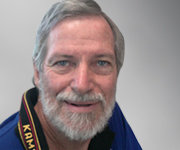TEN years ago I was a GP academic planning a move back to the Kimberley. I had enjoyed working as a solo GP in Fitzroy Crossing earlier in my career and had kept in contact with the region.
Our youngest child was now at university and there was a new rural clinical school being established in WA. Broome seemed the perfect place for a career change — I could teach students, do a bit of work as a GP and relax a little.
The Kimberley Aboriginal Medical Services Council (KAMSC) had other ideas of what I should do in my spare time. The then CEO, Henry Councillor, and medical director, Richard Murray (now dean at James Cook University), hatched a plan with Western Australian General Practice Education and Training (WAGPET) to develop a GP training program in Aboriginal health services across the Kimberley.
Apparently I was just the person for the job. The fact that I had never trained GPs before or that my vocational registration was under the “grandparent” clause rather than as a fellow of the Royal Australian College of General Practitioners was not a problem. I didn’t even know what an ECTV (external clinical teaching visit) was.
WAGPET hastily organised an ECTV practice, offered a crash course in medical education and then found some registrars for me to support. I had a new part-time career as a medical educator.
When I arrived in Broome the only GP registrars were in a local private practice and one at the hospital in nearby Derby. There had been registrars in Aboriginal health services but the lack of support and the workload meant volunteers were few and far between.
Federal funding for GP registrars in Aboriginal health changed this and allowed new programs to flourish.
My job description was pretty simple: attract GP registrars, make sure they enjoy the work and hope they stay. We had some natural advantages — the image of Cable Beach, the lure of exploring remote areas and the opportunity to make a difference in Aboriginal health — and support from WAGPET and General Practice Education and Training.
Ten years later, in 2012 we have had 17 different registrars working in Aboriginal health and I am proud to be part of the team that created this program. Even more satisfying is that over the years many of registrars who completed our program have stayed in the Kimberley as GPs or returned later, or now work in Aboriginal health elsewhere. Many get involved in teaching Aboriginal health.
My role has been to try to make myself available, enthusiastic and friendly. I respond to any enquiries and provide fairly frank information. Registrars need to know the pluses and minuses of what they are getting into and not be too shocked when they arrive.
Providing good housing and helping registrars deal with the bureaucracies that beset our profession are very important. The range of positions and the ability for registrars to choose from a suite of options has helped keep them enthusiastic. KAMSC’s flexibility is highly valued.
Ongoing support and backup for supervisors is a key part of the program, as doctors come and go. I am available for registrars so that problems, misconceptions or other issues that arise during placements are resolved as quickly as possible.
Stopping small problems from becoming large problems is very important to the success of the program — bad news travels fast.
The formal education program in the Kimberley is also well received. An educational environment for registrars is important and this is achieved through the rural clinical school, adding medical students and postgraduate practice placement program (PGPPP) residents to our regional program.
Many former medical students and PGPPP residents return as registrars, and registrars are expected to be involved in teaching.
But what really encourages people to stay is all the extra things — good support, house, car and reduced hassles.
My experience is that most GP registrars are bright, enthusiastic early career doctors who want to work hard and make a difference. The adventurous and selfless nature of our mainly female registrar workforce is amazing.
Registrars are really making a difference in the Kimberley (and elsewhere when they leave the region). In fact, many push themselves too much and need to be reminded that being a GP is a marathon not a sprint.
I don’t have too many concerns about replacing us older doctors in the bush.
I am still not always sure what I am doing, but it is a fascinating journey. It’s a career change that has definitely worked for me.
Dr David Atkinson is a medical educator with the Kimberley Aboriginal Medical Service for WAGPET. He won the 2012 GPET-Ochre Recruitment Aboriginal and Torres Strait Islander Health Training Award for his role in increasing the number of registrars taking up Aboriginal health posts in the Kimberley and the 2009 GPET-Medical Observer GP Supervisor of the Year Award.
Posted 8 October 2012

 more_vert
more_vert
Bravo-well done! May medical students approach you for student placement in 2013 ? I know two bonded students in NSW who are interested in remote placement. Getting students out there may increase their return as registars / GPs in the future.
Thanks for the story David.
I am glad to see your work and the work of the registrars, the Aboriginal health services, KAMSC, WAGPET and GPET recognised.
And so useful to share the particular reasons for the success the program has enjoyed.
I really hope the story continues to spread to other parts of WA and the rest of Australia.
Best wishes!
David and the whole team at KAMSC – working supportively with WAGPET – have shown us all what is possible. They have created a self-sustaining regionally relevant vertically integrated training pathway in the Kimberley Western Australia. Now the challenge is over to all of us. Too hard won’t cut it as an excuse. Well done, David.